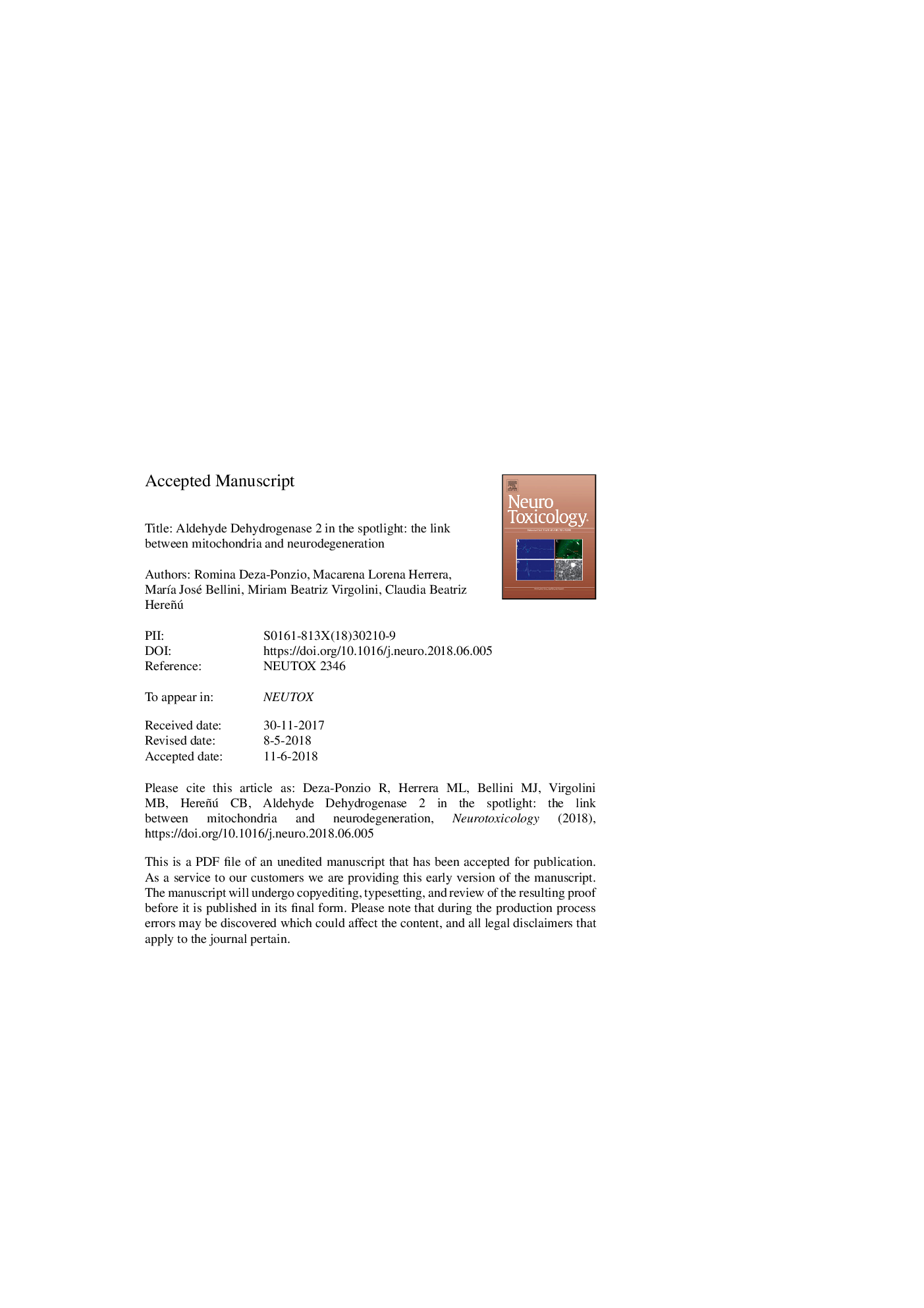| Article ID | Journal | Published Year | Pages | File Type |
|---|---|---|---|---|
| 8550037 | NeuroToxicology | 2018 | 19 Pages |
Abstract
Growing body of evidence suggests that mitochondrial dysfunctions and resultant oxidative stress are likely responsible for many neurodegenerative diseases, including Alzheimer's disease (AD) and Parkinson's disease (PD). Aldehyde dehydrogenase (ALDH) superfamily plays a crucial role in several biological processes including development and detoxification pathways in the organism. In particular, ALDH2 is crucial in the oxidative metabolism of toxic aldehydes in the brain, such as catecholaminergic metabolites (DOPAL and DOPEGAL) and the principal product of lipid peroxidation process 4-HNE. This review aims to deepen the current knowledge regarding to ALDH2 function and its relation with brain-damaging processes that increase the risk to develop neurodegenerative disorders. We focused on relevant literature of what is currently known at molecular and cellular levels in experimental models of these pathologies. The understanding of ALDH2 contributions could be a potential target in new therapeutic approaches for PD and AD due to its crucial role in mitochondrial normal function maintenance that protects against neurotoxicity.
Keywords
ALDHMDAALDH1A1APOE ε4ALDH2ACD4-HNEDOPACCOMTEPIAPPRAS3,4-dihydroxyphenylacetaldehyde3,4-dihydroxyphenylglycolaldehydeROSAdenosine TriphosphateATPaldehyde dehydrogenase 2Aldehyde reductaseMitochondrial dysfunctionacetaldehydePermeability transitionEpinephrineolfactory epitheliumAlzheimer’s diseaseParkinson’s diseaseOxidative stresssubstantia nigraDopamineDOPALmalondialdehydeCSFCerebro spinal fluidGenome-wide association studiesGWASNADultraviolet lightnorepinephrineNicotineamyloid precursor proteinolfactory bulbHVAReactive oxygen species
Related Topics
Life Sciences
Environmental Science
Health, Toxicology and Mutagenesis
Authors
Romina Deza-Ponzio, Macarena Lorena Herrera, MarÃa José Bellini, Miriam Beatriz Virgolini, Claudia Beatriz Hereñú,
